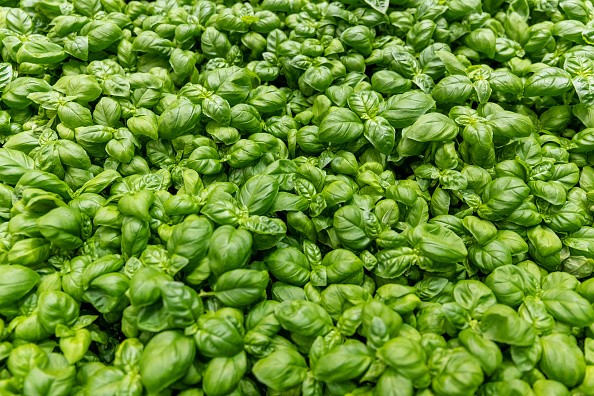The Australian National University (ANU) scientists are using plants as inspiration to create innovative strategies for separating and extracting precious minerals, metals, and nutrients from resource-rich wastewater.
Inspiring New Ways To Extract Value From Wastewater
 (Photo : Maja Hitij/Getty Images)
(Photo : Maja Hitij/Getty Images)

The ANU researchers are modifying plant membrane separation processes so that they may be incorporated into future wastewater recycling technologies, as per ScienceDaily.
This strategy provides a sustainable solution for managing the resources needed for the world's food, energy, and water security by harvesting, recycling, and reusing precious metal, mineral, and nutritional resources from liquid wastes.
Agriculture, aquaculture, desalination, battery recycling, and mining might all profit from the technique.
It might also assist businesses in rethinking their waste management strategies by developing a method to extract value from wastewater.
The study has ramifications for flood and drought-prone locations throughout Australia.
Global wastewater comprises three million metric tonnes of phosphorus, 16.6 million metric tonnes of nitrogen, and 6.3 million metric tonnes of potassium, according to estimates.
The recovery of these nutrients from wastewater has the potential to offset 13.4% of worldwide agricultural demand for these resources.
The ammonia and hydrogen molecules found in wastewater, among other things, have the potential to power 158 million homes.
The world's wastewater includes a tangled mix of commodities that are extremely valuable when clean.
A major difficulty for academics is determining how to efficiently extract these precious minerals, metals, and nutrients while maintaining their purity, according to ANU plant scientist Associate Professor Caitlin Byrt.
The Australian mining sector, for example, generates more than 500 million tonnes of waste every year, most of which contain valuable commodities such as copper, lithium, and iron.
But, for the time being, liquid waste is only an issue; it cannot be disposed of and cannot be utilized.
Unless each resource can be taken out in its purest form, it is merely trash.
This is especially true in the battery recycling industry; we have a big, rich source of lithium within dead batteries, but we can't currently extract or utilize it efficiently.
Harvesting resources from industrial and urban waste is an important step toward moving to a circular green economy, creating a sustainable future, and lowering our carbon footprint.
The researchers looked at the specialized molecular processes that enable plants to recognize and separate distinct metal, mineral, and nutrient molecules in soil, allowing them to divide the good from the bad - an important biological step for their growth and development.
Resources like boron, iron, lithium, and phosphorus are employed in battery technology, and plants are experts in separating these elements, according to Associate Professor Byrt.
Another significant resource scientists are seeking to extract from liquid waste solutions is ammonia, a chemical used to make fertilizer and a crucial ingredient in crop production.
Fertilizer costs are skyrocketing, putting a lot of pressure on Australian farmers to be able to afford these higher rates, while we're squandering significant parts of these molecules, producing environmental difficulties, according to Associate Professor Byrt.
Ammonia is also an important hydrogen fuel storage molecule.
As we continue to develop hydrogen fuel industries, there will be an increase in demand for ammonia as a storage molecule, because that is how the hydrogen fuel industry will be able to transport the stored hydrogen around and eventually use it as a potential fuel source for fueling cars and other technologies.
Also Read: Biochar Created from Agricultural Waste Adsorbs Wastewater Contaminants
Wastewater: the value of minerals and metals
Wastewater is a valuable supply of water, fertilizers, and other recoverable materials that is underutilized, as per ICMM.
Collecting, cleaning, and reusing wastewater reduces potential water stress, preserves public health, lessens the economic impact of pollution on ecosystems, and provides alternative water supplies for agriculture and industry.
Mismanagement of wastewater by industry alone is estimated to result in up to 400 million tonnes of hazardous sludge entering water sources each year.
However, measuring the full magnitude of industrial contamination is challenging since flows are infrequently monitored and rarely pooled.
Wastewater from industry is often a process by-product, with each sector creating a unique mix of contaminants.
Heavy metals, solvents, oil, acids, sulfates, phenols, cyanide, and organic compounds are all discharged into the environment as a consequence.
Agriculture is by far the greatest user of water on the planet, accounting for over 70% of total withdrawals.
Just a portion of this amount might be saved by good wastewater management, alleviating water stress in all parts of society.
Agriculture may cause major wastewater pollution, with nitrate from manure and fertilizer run-off, for example, being the most prevalent chemical pollutant discovered in groundwater aquifers.
Related article: Potato Wastewater Could Feed Bacteria to Help Recycle High-Tech Devices
© 2024 NatureWorldNews.com All rights reserved. Do not reproduce without permission.


![Tsunami Hazard Zones: New US Map Shows Places at Risk of Flooding and Tsunamis Amid Rising Sea Levels [NOAA]](https://1471793142.rsc.cdn77.org/data/thumbs/full/70325/280/157/50/40/tsunami-hazard-zones-new-us-map-shows-places-at-risk-of-flooding-and-tsunamis-amid-rising-sea-levels-noaa.jpg)

![Climate Change is Reducing Dust Levels Worldwide as Arctic Temperature Warms [Study]](https://1471793142.rsc.cdn77.org/data/thumbs/full/70320/280/157/50/40/climate-change-is-reducing-dust-levels-worldwide-as-arctic-temperature-warms-study.jpg)
